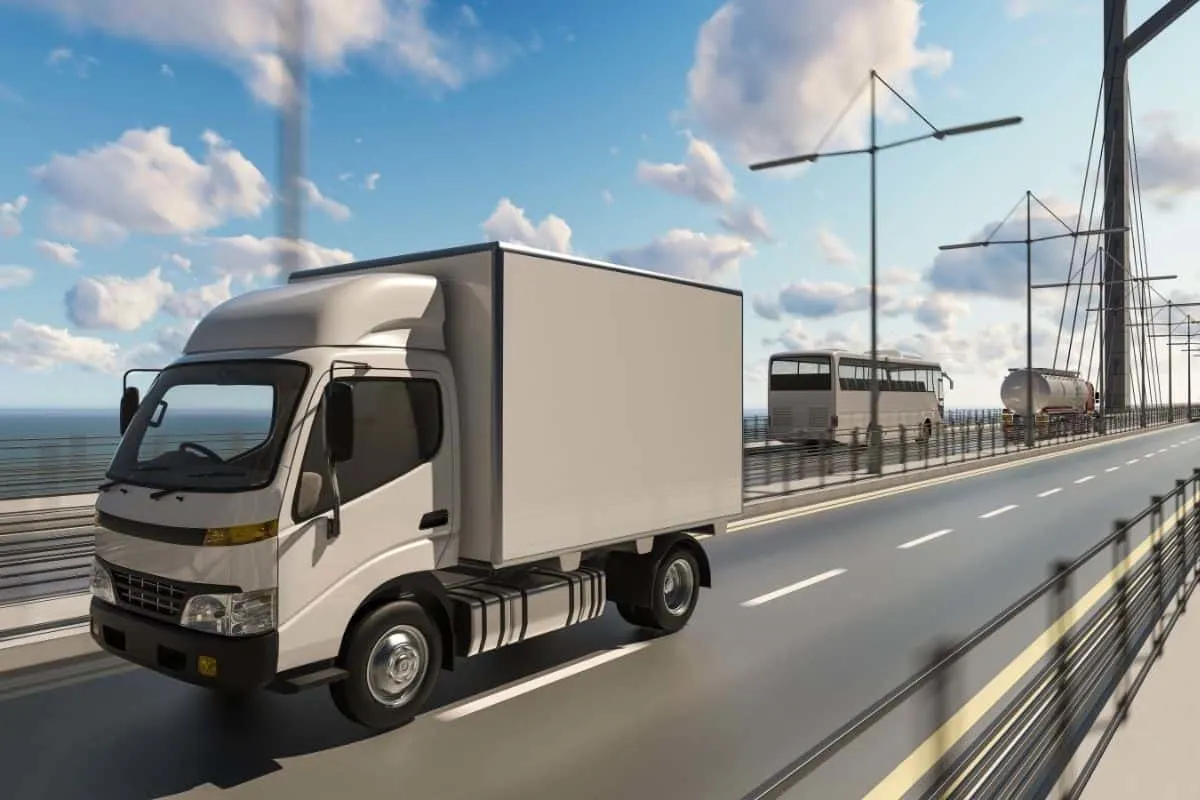If you need to move some freight, you may have come across the term straight truck and wondered what it is. Well, there are a ton of names for the various vehicles used primarily in the freight industry to transport cargo.
Some may be as small as 12 feet in length, while others, such as the semi-trucks, can be as long as 72 feet and have gross weights of 80,000 pounds. If you have moderate cargo, a semi-truck may not suit you, and hence your next option is a straight truck. What is it? Read on to find out.
Today’s article will look at straight trucks, their uses, dimensions, capacities, advantages, and disadvantages!
What Are Straight Trucks?
A straight truck is a commercial motor vehicle where all axles – from the front of the cabin to the rear of the trailer – are attached to a single frame. In other words, the driver’s cabin, the trailer, and the motor all lie on a single unit or chassis.
Therefore, if your truck isn’t a van nor attached to its trailer by a hitch, there’s a high probability that it’s a straight truck.
Also, a straight truck is much similar to the tractor truck, except that you can’t isolate the trailer from the tractor since they’re permanently fixed together and not linked by a hitch.
What Are Straight Trucks Used For?
Straight trucks have a higher gross vehicle weight rating (GVWR), curb weight, and payload than pickup trucks but less than tractor trucks.
Therefore, you can use them for cargo exceeding your pickup/van’s GVWR but less than a tractor truck’s cargo.
As such, they’re commonly used to transport dry and non-perishable goods such as boxes, fridges, washing machines, furniture, etc.
Uses of straight trucks
- Full truckload (FTL) shipping.
- Less than truckload (LTL) shipping.
- Regular delivery.
- Home moving.
Here is some cargo that you can transport with a straight truck.
- Machinery
- General cargo
- Perishable goods such as flowers, vegetables, fruits, etc.
- Medicines
- Construction materials
- Garbage
- Food
Straight Truck Dimensions and Capacities
When picking up the best straight truck for your business, it’s essential to know its dimensions, size, and capacity.
A straight truck that delivers heavy materials might have the same dimensions as one that delivers lighter materials, but their capacities differ!
Locally, most straight trucks in the United States have lengths varying from 12 to 26 feet, with 18, 22, 24, and 26 feet being prevalent. Height-wise, these trucks have heights ranging from 8 to10 feet tall.
Additionally, when buying a straight truck, look at its internal dimensions to determine if it suits you. Most will have a cargo capacity ranging from 380 cubic feet for the 12-ft trucks to as high as 1,800 cubic feet for the 26-ft trucks.
Also, consider the number of seats and cabin spaces if you use the truck for long-distance freight transportation.

What Is the Difference Between a Straight Truck and a Box Truck?
A box truck is another name for a straight truck, so you can use the names interchangeably.
Usually, box/ straight trucks have a different freight compartment separate from where the driver sits.
Therefore, it shouldn’t be confused with the cargo van. However, a van with a different compartment for the driver separate from the cargo area also qualifies as a straight truck.
What Is a Straight Truck Called?
Although the term “straight truck” is the most common, you may also hear a straight truck referred to as a:
- Box truck
- Cube van
- Cube truck
Is a Straight Truck a Semi?
No. Straight trucks don’t have a fifth wheel coupling system and hence aren’t semi-trucks.
To understand the difference between a straight truck and a semi, we need to look at the features of a semi-truck.
A semi-truck is an 18-wheeler/ 18-wheeled articulated truck having three axles and an engine, cab, and trailer. Usually, the rear-wheel-drive (RWD) axles propel the vehicle, while the front axles steer it.
Furthermore, they’re generally Class 7 or Class 8 vehicles that don’t have a tow hitch but have a fifth wheel, and the trailer attaches to a large towing pin known as the king pin.
The king pin is one part of the fifth-wheel coupling in semi-trucks and is where the trailer attaches to the tractor unit.
The horseshoe-shaped fifth wheel allows a more significant portion of the truckload to be transferred to the rear wheels, increasing adhesion, stability, and control.
Advantages of a Straight Truck
If you’re regularly transporting lighter cargo, a straight truck is perfect for you.
Here’s a look at some advantages of owning a straight truck.
- You don’t need a CDL to drive a straight truck. Most truck jobs will require drivers to have a Class B license to operate them safely.
- They’re easier to operate and maintain.
- Have lower operational costs than the tractor-trailers.
- They’re better for city deliveries since they are maneuverable and can pass through streets that the tractor-trailer can’t.
- Since most are less than 26 feet, you will find them easier to park than longer vehicles.
- Using straight trucks for less-than-truckload (LTL) deliveries is faster than sharing a single cargo space in a semi.
Disadvantages of Using a Straight Truck
One major disadvantage of using a straight truck for freight services is that they have a limited capacity!
Therefore, you might have to use two or more trucks to ferry a cargo that can be hauled by one semi-truck.
And to avoid such occurrences, know the truck’s capacity beforehand, as it will make your work easier.
Do You Need a CDL to Drive a Straight Truck?
The law mandates that all drivers must obtain a Commercial Driver’s License if they drive:
- Any vehicle with a gross vehicle weight rating (GVWR) of more than 26,000 pounds or towing another with less than 10,000 pounds.
- Any vehicle with a gross combined weight rating (GCWR) of more than 26,000 pounds, given that the GVWR of the towed vehicle is more than 10,000 pounds.
- Any vehicle mandated by federal guidelines to have a placard while ferrying hazardous materials.
- Any vehicle transporting 16 or more passengers, including the driver.
Therefore, the answer to whether you need a commercial driver’s license to drive a straight truck is that it depends on:
- The amount of cargo you’re transporting,
- Whether you’re towing,
- Type of cargo
- Number of passengers you’re transporting
But generally, most straight truck drivers don’t require a CDL since the weight of the cargo they’re transporting plus the truck’s weight is usually less than 26,001 pounds.
Final Remarks on Straight Trucks
Straight trucks are very beneficial, especially when you need low maintenance, moderate capacity, and maneuverable vehicle.
Also, they’re more advantageous to the drivers since they won’t need to be on the road as much as the semi-trucks.
In the United States, a box truck driver earns between $30,000 to $50,000 per year. Therefore, with hard work and credibility, you can make the same money as the higher-paid semi-truck drivers but work less!
Recommended Reading
Before you go, make sure to also check out these other awesome truck-related resources!
